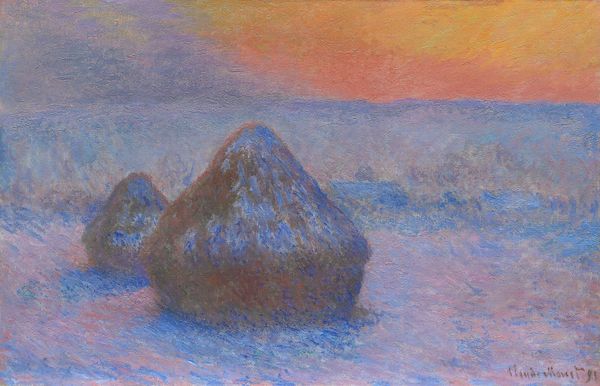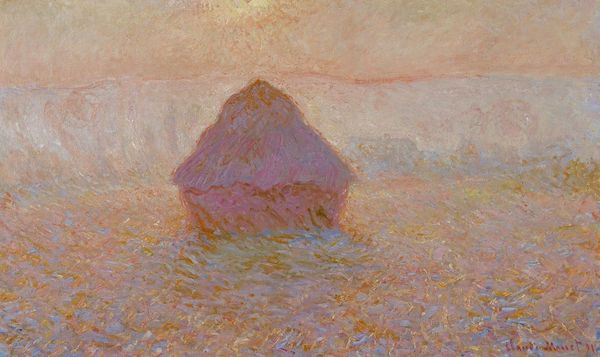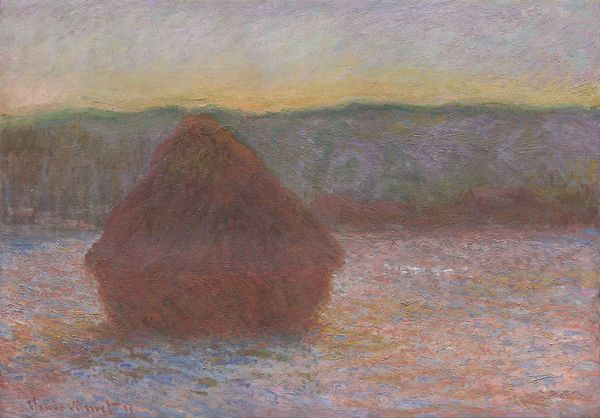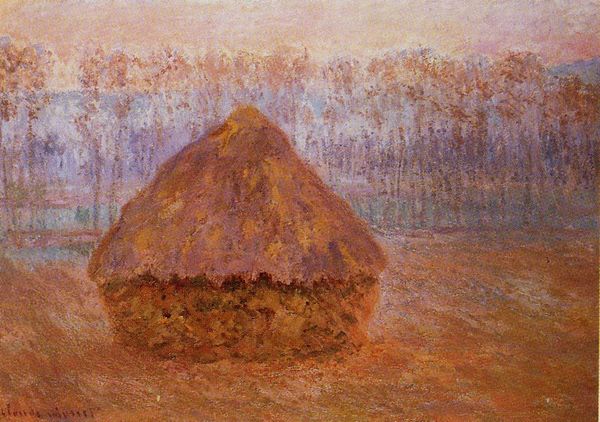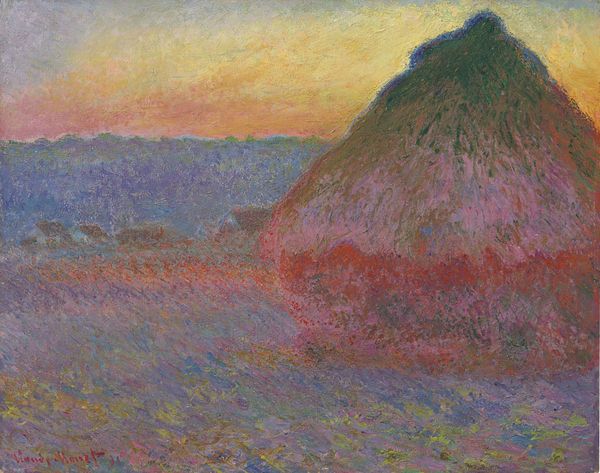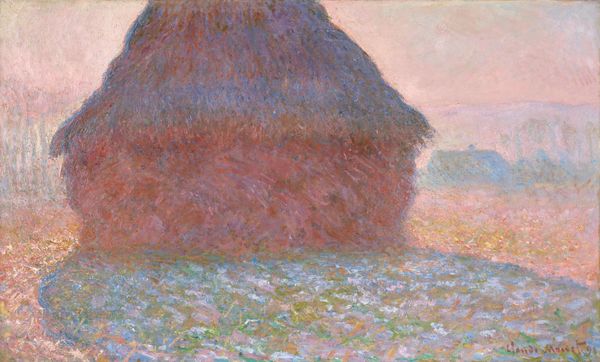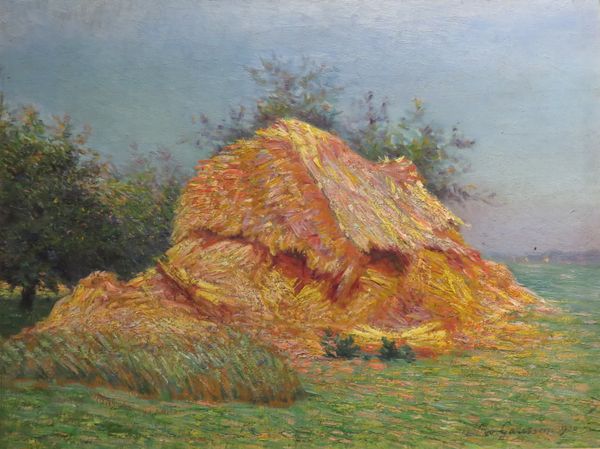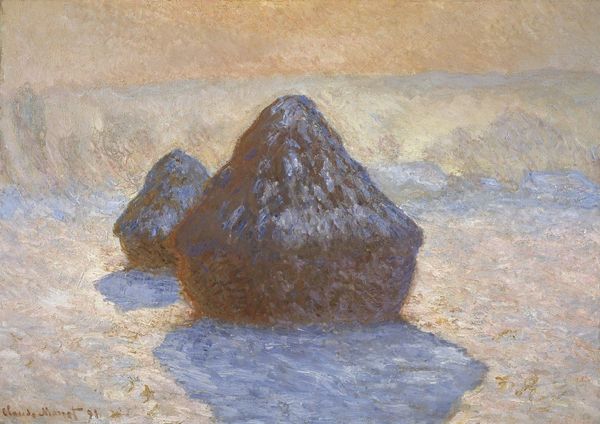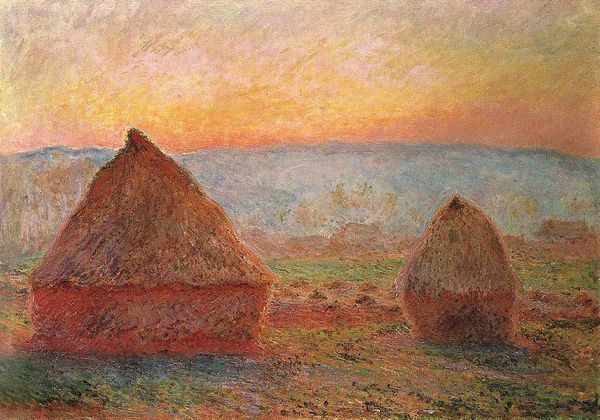
#
sky
#
abstract painting
#
rough brush stroke
#
possibly oil pastel
#
acrylic on canvas
#
underpainting
#
paint stroke
#
watercolour bleed
#
watercolour illustration
#
mixed medium
#
watercolor
Dimensions: 65 x 93 cm
Copyright: Public domain
Curator: This is one of Claude Monet’s "Grainstack" paintings, completed in 1891. It’s currently held in a private collection. Editor: Immediately, I see a stark contrast between the rough, almost muddy texture of the hay and the serene, muted tones of the sky. The paint seems thickly applied in places. Curator: Yes, Monet's interest lay in capturing the ephemeral effects of light and atmosphere. This series, of which this is one, depicts the same subject at different times of day and in varying weather conditions. Note how the seemingly simple haystack becomes a vehicle for exploring perception itself. Consider its weight as harvest, sustenance. Editor: And to think about the sheer physical labor embedded in those stacks. Someone, or many someones, gathered that grain, bundled it, stacked it. The Impressionists often gloss over those aspects, favoring instead a bourgeois leisure class in their imagery, which can be frustrating. The painting seems focused more on how materials reflect back sunlight than laboring in sunlight. Curator: But isn't there something deeply human in documenting such a fundamental part of agrarian life? The haystack itself, beyond its immediate utility, becomes a symbol of abundance, of preparation for the future, a cultural touchstone tied to cycles of life and nature. We project meaning onto these forms; they're not merely objects but vessels of cultural memory. Editor: That is a romantic way to put it, however, from my point of view, the materials used—the pigments, the canvas, the brushes—were all commodities, produced and traded within a burgeoning capitalist system. It makes you wonder how that system shapes both what we see and how we choose to depict it. It’s very removed from a field. Curator: Well, both material reality and symbolic meaning are valid entry points, no? The lasting appeal, I would suggest, rests in how skillfully Monet merged observation and symbol into a lasting expression. He invites the viewer into not only his perception but into an exploration of what the landscape signifies. Editor: True enough. Maybe Monet's haystack reminds us that even the simplest subject, rendered with care and thought, can offer insight into our complex relationship with both the world around us and our own economic systems.
Comments
No comments
Be the first to comment and join the conversation on the ultimate creative platform.

